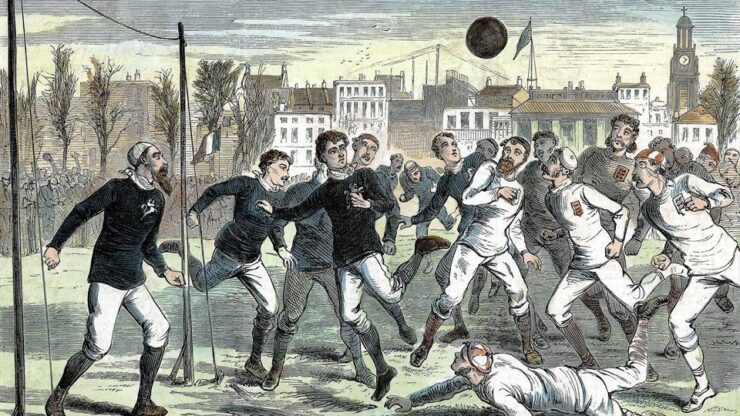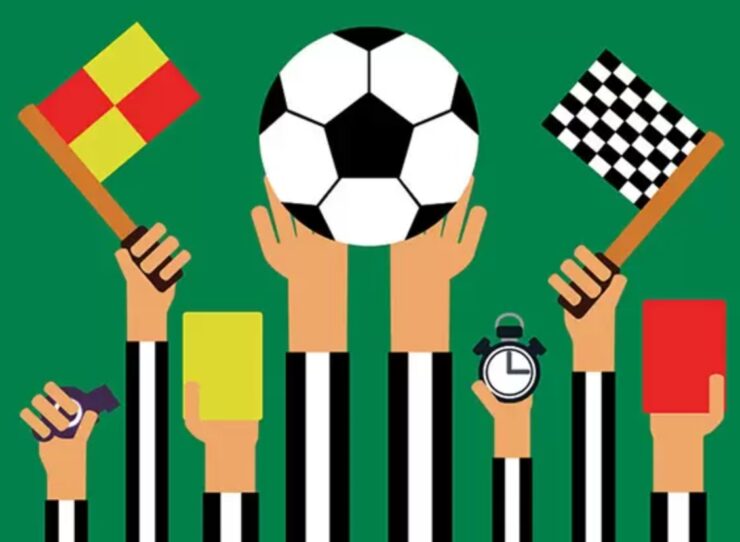Football, known as “the beautiful game,” has captured the hearts of millions around the world. From humble beginnings to the global phenomenon it is today, football has undergone a remarkable evolution. Understanding its journey over the decades helps us appreciate the sport’s current stature and significance.
This article delves into the historical origins of football, the establishment of modern rules, the emergence of football clubs, the evolution of equipment and tactics, globalization’s impact, the role of media, the changing landscape of players, technology’s influence, glimpses of the future, and the allure of football-themed slots in the world of online gaming.

Football Fever: The Thrilling World of Football-Themed Slots
Experience the exhilaration of the beautiful game right from the comfort of your couch with football-themed slots! These action-packed casino games combine the excitement of football with the thrill of spinning reels, offering a unique and immersive gaming experience. From iconic stadiums to roaring crowds, football-themed slots transport players to the heart of the action.
Featuring symbols like footballs, players, referees, and trophies, these slots capture the essence of the sport while offering various bonus features and free spins to keep the excitement going. Whether you’re a die-hard football fan or a casual player looking for some entertainment, these slots are sure to kick your gaming experience up a notch! So, lace up your virtual boots and get ready to score big with the Top-rated Vegas casino online real money world of football-themed slots.
Early Origins of Football
Football’s roots trace back to ancient civilizations, where various forms of ball games were played. These games differed in rules and playstyles, but they all shared the common spirit of competition and enjoyment. For instance, in ancient China, “cuju” involved players kicking a leather ball through a small net. Meanwhile, the Greeks and Romans had their versions of “harpastum” and “harpaston,” which were more physical contests involving teams battling for control of a ball.
The transformation from these ancient ball games to modern football began to take shape during the mid-19th century in England. The need for standardized rules led to the formation of the Football Association (FA) in 1863. With the FA’s efforts, the first-ever rulebook was created, laying the foundation for modern football regulations. Visionaries like Ebenezer Cobb Morley played a significant role in shaping these rules, emphasizing fair play and teamwork.
The Pioneers of Early Football Clubs
As football rules became standardized, the formation of organized clubs emerged. These early clubs brought together passionate enthusiasts, both amateur and professional, who had a shared love for the sport. Iconic football clubs like Notts County, founded in 1862, and Sheffield FC, established in 1857, exemplify the early pioneers that contributed to football’s legacy.
These clubs also played a pivotal role in establishing organized competitions and leagues, further fueling the sport’s growth. The Football League, formed in 1888, marked a significant milestone in football’s history, leading to the creation of other national leagues worldwide.

The Evolution of Football Equipment
In the early days, football equipment was rudimentary, with players often wearing whatever they could find. Balls were typically made of leather and stuffed with feathers or other materials, resulting in inconsistent shapes and sizes. As the game progressed, innovations in equipment were introduced, focusing on safety and performance.
In the mid-20th century, the introduction of synthetic materials revolutionized football gear. Lightweight and durable materials, such as synthetic leather and nylon, replaced traditional materials, improving player comfort and ball control. Today, high-tech boots with advanced features are designed to optimize performance, providing players with better traction and reducing the risk of injuries.
Tactical Developments in Football
Football’s tactical evolution has been one of the game’s most captivating aspects. In the early years, formations like the “2-3-5” and “WM” were popular, emphasizing attacking prowess. However, as strategies evolved, modern tactical systems, such as the “4-4-2,” “4-3-3,” and “4-2-3-1,” became prevalent.
The tactical innovation has also impacted offensive and defensive approaches. Counter-attacking and pressing gained popularity, reshaping the way teams approached matches. Visionary coaches and managers, such as Rinus Michels with Total Football and Pep Guardiola’s tiki-taka, have left a profound mark on football tactics.
The Globalization of Football
Football’s popularity extended far beyond its birthplace in England, spreading to different corners of the globe. International competitions, such as the FIFA World Cup and UEFA Champions League, played a significant role in promoting football worldwide. These tournaments showcased the diversity of talent and playing styles from various countries, captivating audiences on every continent.
Football’s globalization also led to the adaptation of the sport in different regions, blending local traditions and cultures with the game. It became more than just a sport—it became a bridge that connected people worldwide through shared passion and admiration for the beautiful game.

Football and Media
Media played a crucial role in football’s rise to global prominence. From radio broadcasts in the early 20th century to television coverage in the latter half, football found its way into the living rooms of millions. The World Cup finals and other major competitions became celebrated events, uniting families and communities in front of their screens.
The advent of digital media and social platforms further amplified football’s reach. Social media platforms allowed fans to connect with players, clubs, and fellow enthusiasts like never before. In turn, this fueled the growth of online football communities and fan engagement across the globe.
The Evolution of Football Players
Football players have also undergone significant changes over the decades. In the past, the sport was predominantly played and led by local talents. However, with football’s globalization, players from diverse backgrounds and cultures began to excel at the highest level.
Modern football has seen a shift in player roles and positions, with specialized positions emerging in response to tactical developments. Players are now expected to be more versatile and adaptable, contributing to both defense and offense.
Additionally, the emphasis on athleticism and technical skill has intensified, with players undergoing rigorous training and specialized coaching to refine their abilities.

The Impact of Technology on Football
Technology has had a profound impact on football, both on and off the field. The introduction of VAR (Video Assistant Referee) brought a new dimension to officiating, allowing for more accurate and fair decision-making. Despite some controversies, VAR has undoubtedly improved the overall quality of the game.
Off the field, technology has revolutionized player performance analysis. Sophisticated data analytics provide insights into player statistics, positioning, and tactics, helping coaches and teams gain a competitive edge. Additionally, tracking technology and wearables assist in injury prevention and player monitoring, optimizing their training and recovery processes.
The Future of Football
As football continues to evolve, the sport’s future holds exciting possibilities. Innovations in technology are likely to create more immersive fan experiences and enhance the game’s overall appeal. Sustainable practices will likely become a priority, with the sport addressing environmental concerns and its long-term impact.
Moreover, football’s role in driving positive social change and community development will expand. The sport’s ability to unite people from diverse backgrounds will continue to be a powerful force in fostering mutual understanding and cultural exchange.

Conclusion
The journey of football from ancient ball games to the modern global phenomenon is awe-inspiring. Through the establishment of standardized rules, the rise of early football clubs, the evolution of equipment and tactics, globalization, media’s influence, the changing landscape of players, technology’s impact, and glimpses of the future, football has grown to become the most beloved sport on Earth. Its enduring legacy will continue to inspire generations of fans, players, and enthusiasts, making it a timeless symbol of unity and passion. As football marches confidently into the future, its evolution remains a testament to the unyielding spirit of sport and its ability to transcend borders and bring people together.



